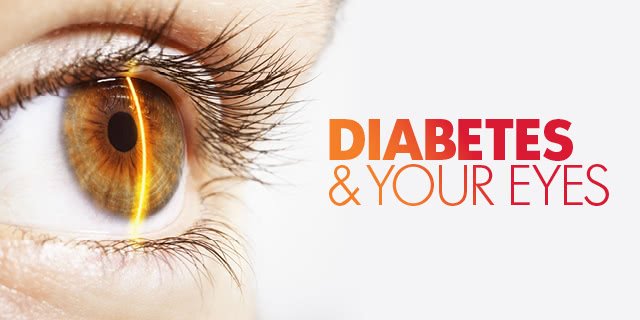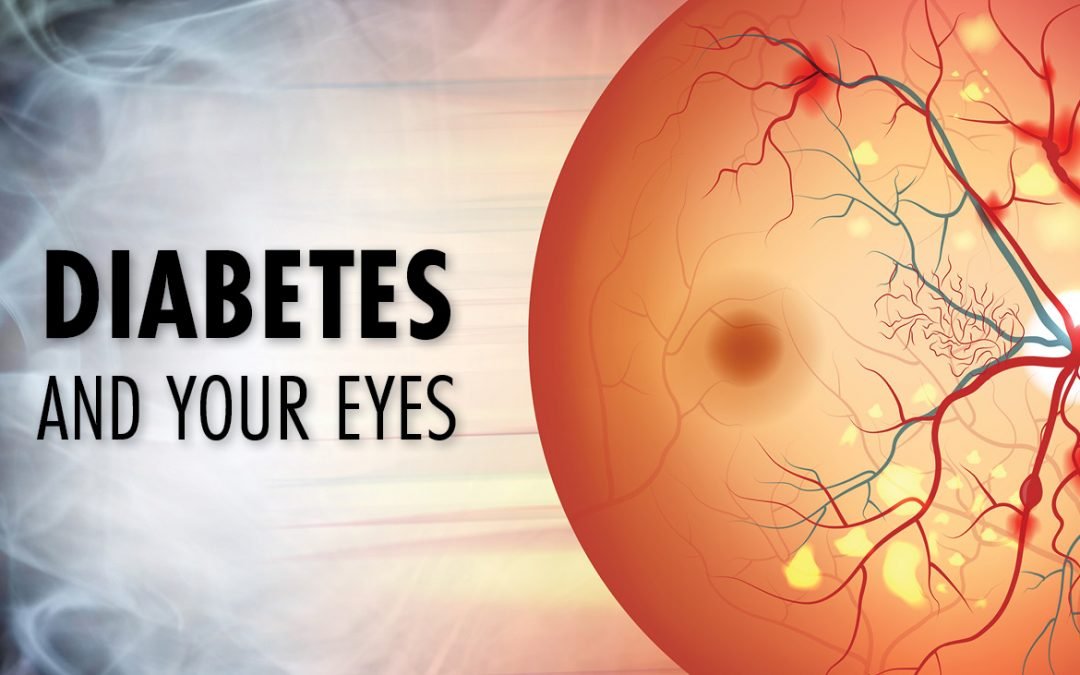Introduction
Diabetes is a chronic condition that affects millions of individuals worldwide, leading to various health complications if not managed properly. One area that often receives less attention is the impact of diabetes on eye health. As the prevalence of diabetes continues to rise, understanding the connection between diabetes and eye health becomes increasingly essential for individuals living with this condition. In this article, we will explore the various ways diabetes can affect vision, the importance of regular eye examinations, preventative measures, and tips for maintaining optimal eye health.
Understanding Diabetes and Its Impact on Eye Health

Before diving into the specifics of eye health, it is crucial to understand what diabetes is and how it affects the body. Diabetes is characterized by elevated blood sugar levels due to the body’s inability to produce or effectively use insulin, a hormone that regulates blood glucose levels. There are two primary types of diabetes: Type 1 and Type 2.
- Type 1 Diabetes: This is an autoimmune condition where the body’s immune system attacks insulin-producing cells in the pancreas. It usually manifests in childhood or adolescence.
- Type 2 Diabetes: This is more common and often develops in adulthood, primarily as a result of lifestyle factors, including poor diet and lack of physical activity. In Type 2 diabetes, the body becomes resistant to insulin, causing blood sugar levels to rise.
Both types of diabetes can lead to serious health complications, including those affecting eye health.
The Effects of Diabetes on Eye Health: Common Conditions
Diabetes can lead to various eye conditions, collectively referred to as diabetic eye disease. The following are some of the most common conditions associated with diabetes and eye health:
1. Diabetic Retinopathy: A Major Concern for Diabetes and Eye Health
Diabetic retinopathy is one of the most serious eye complications of diabetes. It occurs when high blood sugar levels damage the blood vessels in the retina, leading to vision impairment. There are two stages of diabetic retinopathy:
- Non-Proliferative Diabetic Retinopathy (NPDR): In this early stage, blood vessels in the retina become weakened and may leak fluid, causing swelling in the retina.
- Proliferative Diabetic Retinopathy (PDR): This advanced stage occurs when new, abnormal blood vessels grow in the retina. These vessels are fragile and can bleed, leading to severe vision loss.
2. Cataracts and Diabetes: Understanding the Connection
Individuals with diabetes are at a higher risk of developing cataracts, a condition characterized by clouding of the eye’s natural lens. This can lead to blurred vision and, if left untreated, may require surgical intervention. Diabetes can accelerate the formation of cataracts, often leading to earlier onset compared to non-diabetic individuals.
3. Glaucoma Risks for Diabetics: Protecting Your Eye Health
Glaucoma is another eye condition that can be exacerbated by diabetes. It involves damage to the optic nerve, often due to increased pressure within the eye. Diabetics are at a higher risk of developing open-angle glaucoma, which can lead to vision loss if not detected and treated promptly.
4. Additional Eye Health Risks Associated with Diabetes
In addition to the conditions mentioned above, diabetes can also increase the risk of other eye-related issues, such as:
- Uveitis: Inflammation of the middle layer of the eye, which can cause pain and vision disturbances.
- Dry Eye Syndrome: A condition where the eyes do not produce enough tears, leading to discomfort and potential damage to the eye surface.
The Importance of Regular Eye Examinations for Diabetic Patients
For individuals with diabetes, regular eye examinations are crucial for early detection and management of diabetic eye disease. The American Academy of Ophthalmology recommends that individuals with diabetes receive a comprehensive eye exam at least once a year. During these exams, eye care professionals can assess the health of the retina and detect any early signs of diabetic retinopathy or other eye conditions.
What to Expect During a Comprehensive Eye Exam
A comprehensive eye exam typically includes the following components:
- Vision Testing: Assessing visual acuity to determine if corrective lenses are needed.
- Dilated Eye Exam: Eye drops are used to widen (dilate) the pupils, allowing the eye doctor to examine the retina and optic nerve for any signs of damage.
- Tonometry: A test that measures the pressure inside the eye to check for glaucoma.
- Retinal Imaging: Advanced imaging techniques may be employed to capture detailed images of the retina for further analysis.
Preventative Measures for Maintaining Eye Health in Diabetics
While diabetes can pose significant risks to eye health, there are several proactive measures individuals can take to protect their vision:
1. Control Blood Sugar Levels for Optimal Eye Health
Keeping blood sugar levels within the target range is essential for preventing complications related to diabetes, including eye health issues. This can be achieved through:
- Healthy Diet: A balanced diet rich in whole grains, fruits, vegetables, lean proteins, and healthy fats can help regulate blood sugar levels.
- Regular Exercise: Engaging in regular physical activity can improve insulin sensitivity and aid in blood sugar management.
- Medication Adherence: Taking prescribed medications as directed by a healthcare professional is crucial for effective diabetes management.
2. The Impact of Smoking on Eye Health for Diabetics
Smoking can exacerbate eye health issues, particularly for individuals with diabetes. Quitting smoking can significantly reduce the risk of diabetic eye disease and other complications associated with diabetes.
3. Maintaining a Healthy Weight for Better Diabetes and Eye Health
Being overweight or obese can increase the risk of developing Type 2 diabetes and its associated complications, including eye problems. Achieving and maintaining a healthy weight through diet and exercise can improve overall health and reduce diabetes-related risks.
4. Hydration and Its Role in Eye Health for Diabetics
Proper hydration is essential for maintaining eye health. Drinking enough water helps keep the eyes lubricated and can prevent dry eye syndrome.
5. Protecting Your Eyes from UV Rays: A Simple Step for Diabetics
Wearing sunglasses that block ultraviolet (UV) rays can help protect the eyes from harmful sunlight, reducing the risk of cataracts and other eye conditions.
Conclusion: Safeguarding Your Vision with Diabetes Management
The connection between diabetes and eye health is a critical aspect that cannot be overlooked. Individuals living with diabetes must prioritize regular eye examinations and adopt lifestyle changes to manage their condition effectively. By understanding the potential risks and taking proactive measures, it is possible to protect vision and maintain overall eye health.
Taking care of your eyes is an essential part of managing diabetes. By staying informed and working closely with healthcare professionals, individuals can enjoy a better quality of life while safeguarding their vision for the future.
FAQs
1. How often should individuals with diabetes have eye exams?
Individuals with diabetes should have a comprehensive eye exam at least once a year. However, those with existing eye problems may need more frequent examinations.
2. Can diabetic eye disease be reversed?
While some effects of diabetic eye disease can be managed or treated, complete reversal may not be possible. Early detection and treatment are crucial for preserving vision.
3. What are the symptoms of diabetic retinopathy?
Symptoms may include blurred vision, floaters, dark areas in vision, or difficulty seeing at night. Regular eye exams are essential for early detection.
4. Can lifestyle changes prevent diabetic eye disease?
Yes, managing blood sugar levels through a healthy diet, regular exercise, and maintaining a healthy weight can significantly reduce the risk of developing diabetic eye diseases.
5. Are there any specific foods that promote eye health for diabetics?
Foods rich in antioxidants, such as leafy greens, carrots, fish high in omega-3 fatty acids, and fruits like berries, can support eye health.
By following these guidelines and remaining vigilant about eye health, individuals with diabetes can take meaningful steps towards protecting their vision and overall well-being.

